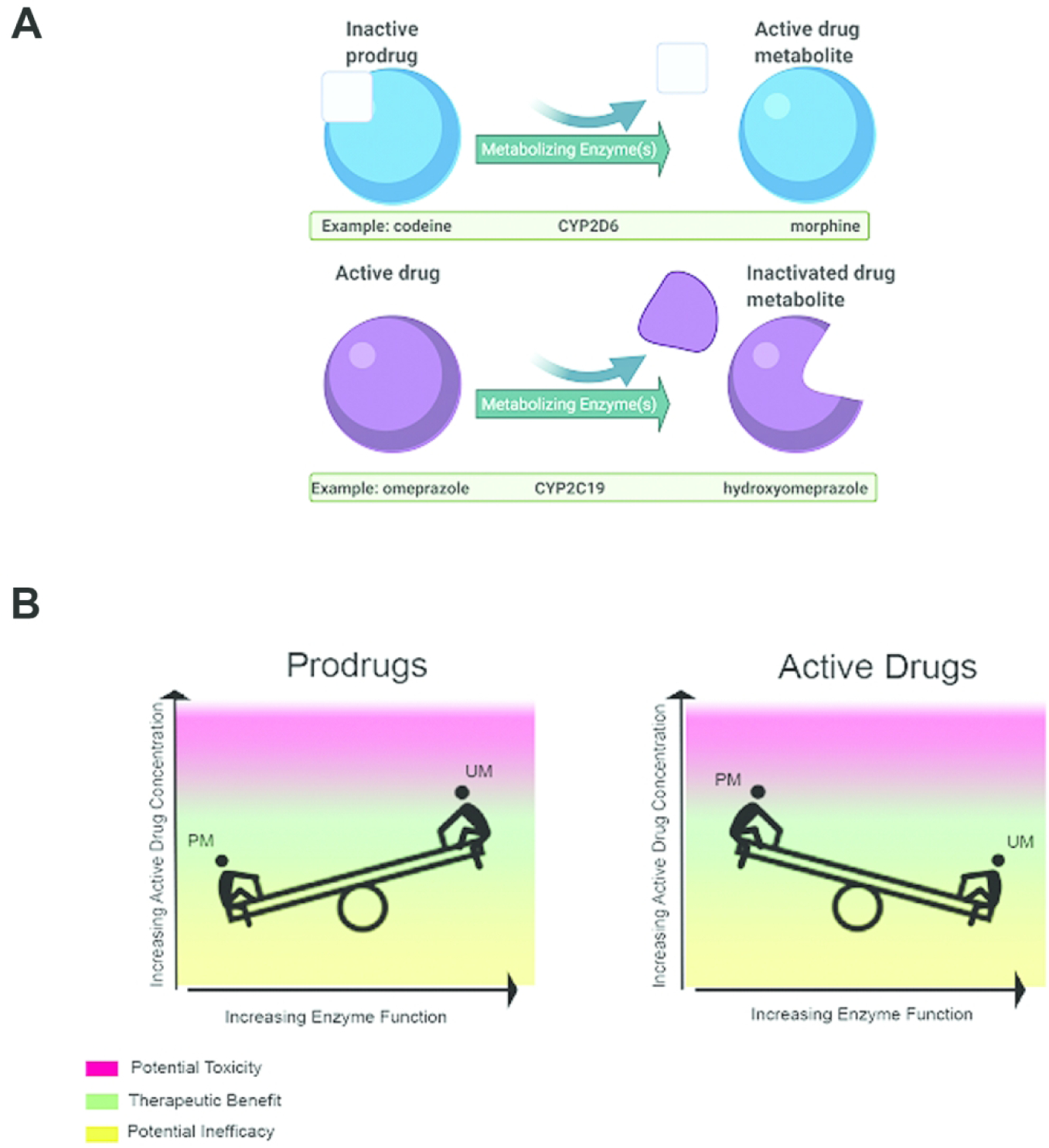Figure 1:

The relationship between prodrugs, active drugs and inactivated drug metabolites, and metabolizer status. (A) Inactive prodrugs (top) need to be metabolized into an active drug metabolite to have therapeutic effect. In contrast, when an active drug is administered, metabolism of the drug can result in an inactivated drug metabolite. (B) Since prodrugs (left) are metabolized to an active form of the drug to achieve therapeutic effect, poor metabolizers who have low enzyme function will have low active drug concentrations and are at risk for inefficacy. Ultrarapid metabolizers who have high enzyme function are at risk of high active drug concentrations and potential toxicity. Active drugs (right) are metabolized into inactive drugs that have minimal or no therapeutic effect. Poor metabolizers are therefore at risk of high concentrations of active drugs and thus potential toxicity, while ultrarapid metabolizers will have low concentrations of active drug and may not achieve therapeutic efficacy.
